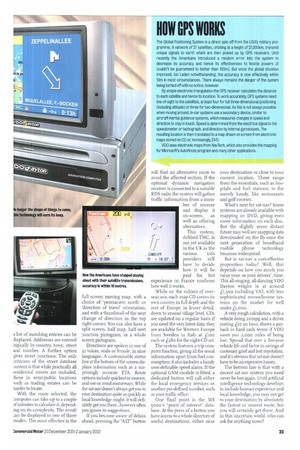HOW GPS WORKS
Page 33

If you've noticed an error in this article please click here to report it so we can fix it.
The Global Positioning System is a direct spin-off from the USA's military programme. A network of 27 satellites, orbiting at a height of 21,000km, transmit unique signals to earth which are then picked up by GPS receivers. Until recently the Americans introduced a random error into the system to decrease its accuracy and hence its effectiveness to hostile powers (it couldn't be guaranteed to better than 100m). But since the global situation improved, bin Laden notwithstanding, the accuracy is now effectively within 10m in most circumstances. There always remains the danger of the system being turned off with no notice, however.
By simple electronic triangulation the GPS receiver calculates the distance to each satellite and hence its location. To work accurately, GPS systems need line-of-sight to the satellites, at least four for full three-dimensional positioning (including altitude) or three for two-dimensional. As this is not always possible when moving around, in-car systems use a secondary device, similar to aircraft inertial guidance systems, which measures changes in speed and direction to stay in touch. Speed is determined from the electrical signal to the speedometer or tachograph, and direction by internal gyroscopes. The resulting location is then translated to a map drawn on screen from electronic maps stored on CD or, increasingly, DVD. VDO uses electronic maps from NavTech, which also provides the mapping for Microsoft's AutoRoute program and many other applications.




























































































































































